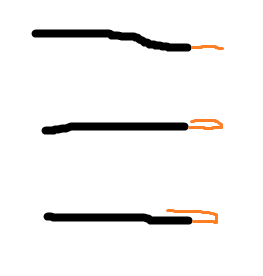Love that Kester solder. I picked up a 1lb spool like that for $15 at a hamfest 6 or 7 years ago and have used to for tons of projects but it still weighs in at 14oz so TONS left. Always been a fan of Kester’s solder.
That and MG’s superwick desoldering braid. Not even worth trying to use cheap braid if you need to desolder. The MG braid is like magic. I keep a variety of sizes on hand because having the right size make a big difference as well.
I got a set of the IWISS SN-2549 crimpers that were highly touted for dupont pins…but found them harder to use than my old method of a magnifier and some precision needle nose pliers. But a few weeks ago I gave them another try and finally had good luck getting reliable crimps out of them.
Picked up a cheap $2 pair of flush cutters off wish a few months ago as well and they’ve blown me away. Bought them on a whim because of how cheap they were…but they’re now one of my favorite tools and by far the best flush cutters I’ve owned. “Plato model 170” for what the markings on the handle are worth. Though even buying the same ones from the same listing again I wouldn’t be surprised if I got something totally different 
I also just a month or two finally found a pair of wire strippers I actually like. I’ve hated wire strippers for as long as I can remember since I never had good luck with them. About a year ago I got a set of ideal 45-125 that were recommended by the designer of a radio amplifier kit I was building. And they just reinforced my hatred of wire cutters. Actually had to get replacement wire for one of the transformers after they ruined it trimming the insulation after winding. Then I saw a youtube video from Becky Stern recommending the Hakko CHP CSP-30-1 strippers on Amazon and decided to give them a try. Wow! These actually work!
Comparing the Hakko to the ideal strippers the difference is obvious. It looks like the holes on the idea are all one size larger than indicated. 26 on the Ideal’s is the same size as the 28 on the Hakkos. That explains why the Ideals usually shred insulation instead of stripping it in my experience.
The Hakko strippers also have more sizes (20,22,24,26,28,30 compared to the Ideal’s 22,24,26,28,30) Though the Ideal also marks each opening differently for solid vs. stranded with the stranded marking one size smaller so the smallest hole on the Ideals is marked 30 solid, 32 stranded but is the size of the single 28 on the Hakkos…and size 30 solid wire pulls right through the ideal strippers but gets stripped perfectly on the Hakkos.
The one complaint I do have about the Hakkos is that the markings are harder to read. They’re engraved so won’t rub off…but they aren’t colored at all. I rubbed some white acrylic paint in them to make them readable.
The ideals were also $2 more on Amazon. So the Hakko’s are cheaper and work better - big win!



